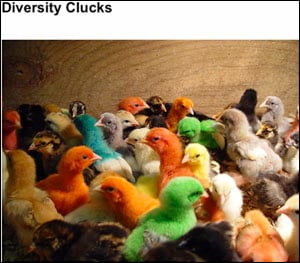 Nonprofit organizations are filled with some of the most passionate leaders who are fighting for social change yet 92 percent of national nonprofits headquartered in Washington, DC are led by white Executive Directors. Surprised? The panel “Diversifying Your Tech and Online Communications Teams” at NTC moderated by Jocelyn Harmon of Care2 and featuring Allyson Kapin of Rad Campaign and Frogloop Blogger-In-Chief, Shireen Mitchell of Digital Sistas and Ivan Boothe of Rootwork was a candid discussion about why diversity is important to developing nonprofit technology and bringing in valuable and different perspectives to the organizations online communications teams and senior leadership.
Nonprofit organizations are filled with some of the most passionate leaders who are fighting for social change yet 92 percent of national nonprofits headquartered in Washington, DC are led by white Executive Directors. Surprised? The panel “Diversifying Your Tech and Online Communications Teams” at NTC moderated by Jocelyn Harmon of Care2 and featuring Allyson Kapin of Rad Campaign and Frogloop Blogger-In-Chief, Shireen Mitchell of Digital Sistas and Ivan Boothe of Rootwork was a candid discussion about why diversity is important to developing nonprofit technology and bringing in valuable and different perspectives to the organizations online communications teams and senior leadership. 
After starting out with a funny video about HP computers being racist that illustrated the negative impact if organizations don't have diverse people working and testing their products, the panel quickly moved into discussing what diversity is not and what it is and why it is good for nonprofits (and businesses for that matter).
In the panel’s context, diversity is not about whether or not an organization serves different communities, but rather whether or not the makeup of the staff is truly diverse and whether or not diverse opinions are the norm in the organization - in short, diversity is about both process and people. Diversity is also good for business; it increases innovation and competition which feeds creativity and ultimately success. Without diversity, programs or products tend to be narrowly tailored and may fall flat or become the subject of ridicule (just look at the iPad/#itampon meme that generated an enormous amount of media mocking Apple when they named their most recent product after a feminine hygiene product).
In making the case for diversity the panel brought up some interesting stats for Nonprofits to consider.
- The US population is comprised of over 50% women and 40%+ people of color.
- 86% of nonprofit board members are non-Hispanic white in the DC/Baltimore area.
- Women donate to twice as many charities as men.
- Women of color give more money as a percent of their income than any other demographic.
- Fortune 500 companies who had more women on the Board of Directors were at least 40% more profitable, according to a study conducted by Catalyst.
Notice a problem there? Think about your Nonprofit organization – chances are it’s not a paragon of diversity.
So why is this important? Well for one thing money. More diverse boards and online communications teams tend to equal more diverse funding streams. This is especially true of boards and major donors. Board members tend to reach out solely to their networks to entice major donations; a more diverse set of board members can mean a more diverse set of major donors with different sources of income that may still be available to you in difficult economic times, depending on the economic sectors hit the hardest in a given downturn.
How can you go about making your teams more diverse? The panel had a handy 5 tips to help:
- Map your network and empower the edges.
- Meet new folks (lots of them!).
- Learn about a community vs. stumbling into it and trying to represent people you don’t know.
- “Open the door.”
- Tap into affinity networks.
One of the more interesting points in the audience discussion was about class diversity and the importance of nonprofits resisting the impulse to focus too much on their donors at the expense of the community served. It’s very easy to fall into the trap of tailoring your programs and communications to the people who give you money, but this can often have the effect of alienating the community whose needs may not match up to the desires of your donors – so it’s important to keep your communities perspective.
What do you think about all this? Is your Nonprofit even thinking about diversity on staff?
*This article was written by Jared Seltzer, the Founding Partner of Rad Campaign, an online communications firm that provides web design, web development, online marketing, and strategy for nonprofit organizations and political campaigns.
You should follow Frogloop on Twitter.


COMMENTS